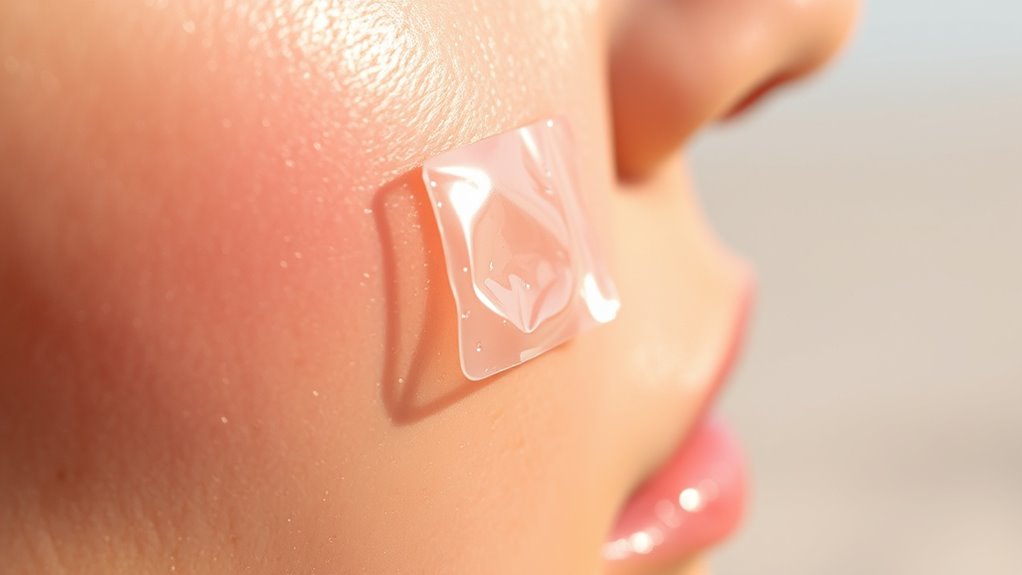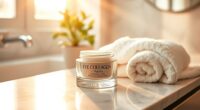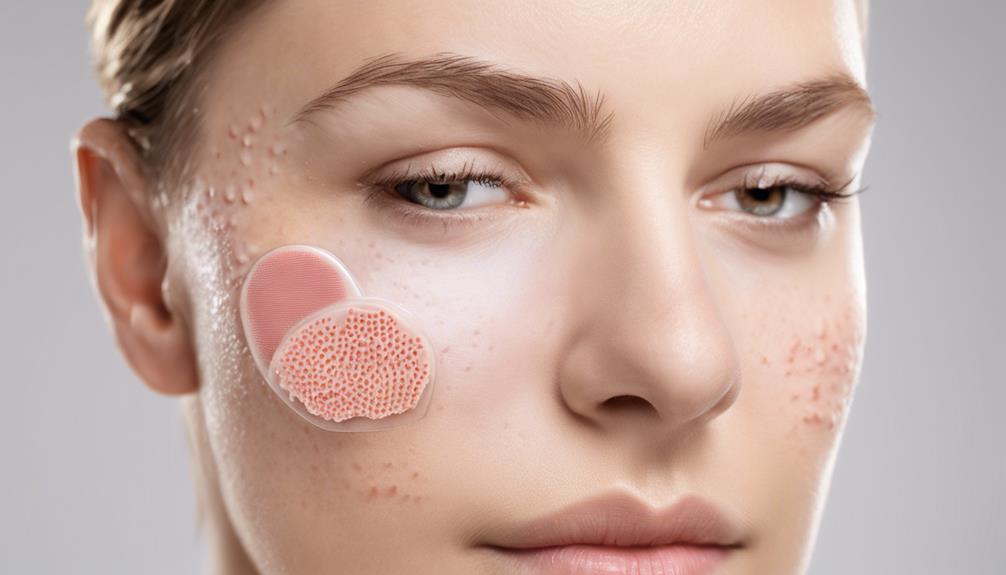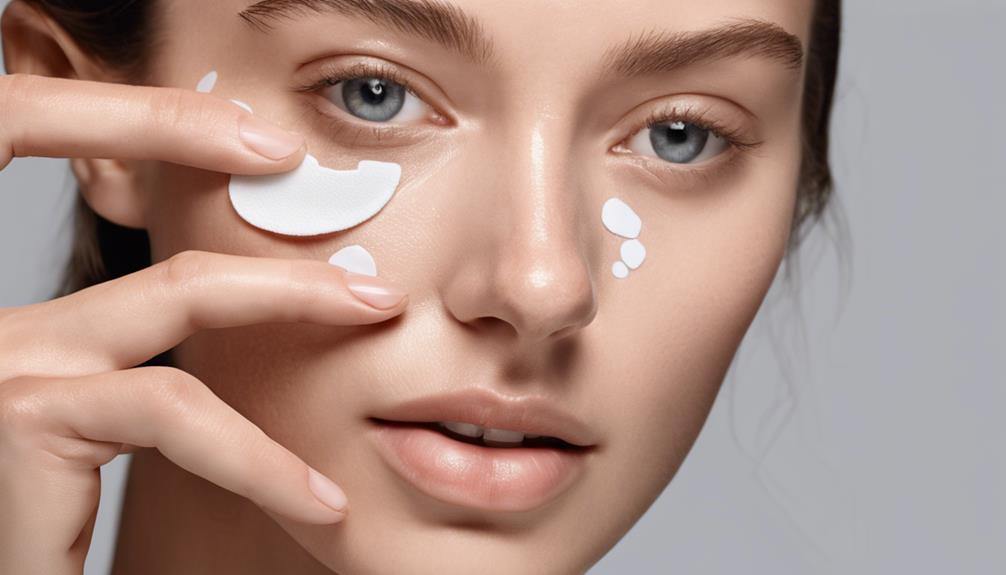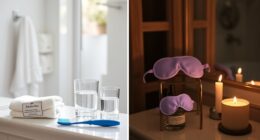The perfect time to remove a pimple patch is when it turns opaque or white. This change indicates it’s absorbed excess fluids and impurities, enhancing healing. Generally, you should aim for 6 to 8 hours of wear, but for stubborn breakouts like cystic acne, you might consider keeping it on for up to 24 hours. Just keep an eye on your skin’s response, as irritation can occur. There’s more to know about maximizing your patch’s effectiveness.
Key Takeaways
- Leave the pimple patch on for 6 to 8 hours for optimal healing, ideally overnight.
- Remove the patch when it turns opaque or white, indicating effective fluid absorption.
- For stubborn breakouts, consider extended wear of up to 24 hours, but monitor saturation closely.
- Individuals with sensitive skin may need to remove patches earlier to avoid irritation.
- Regularly assess your skin’s response to determine the best time for patch removal.
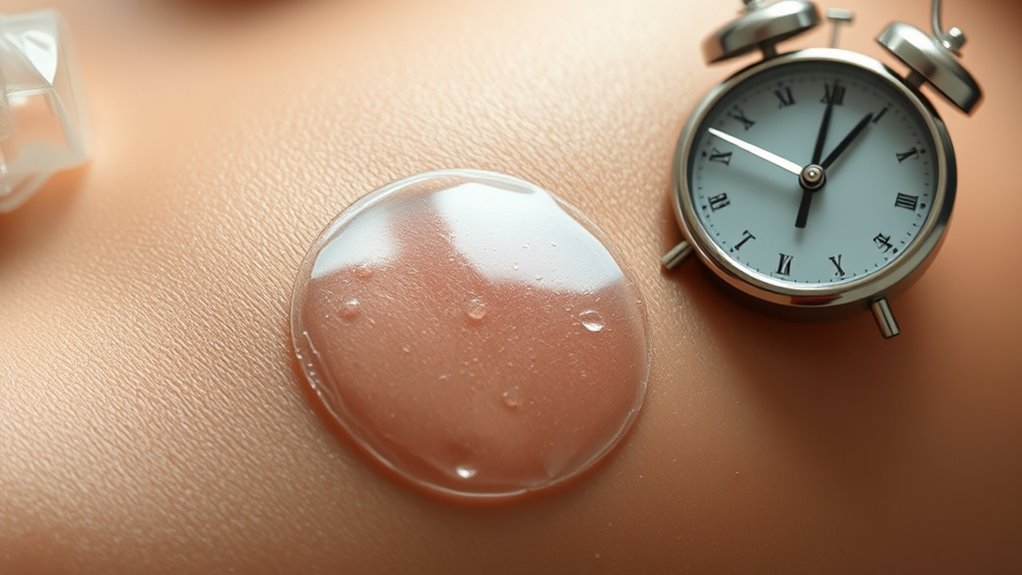
When you’re dealing with a breakout, knowing the right timing for your pimple patch can make all the difference. Pimple patches are typically designed to be worn for 6 to 8 hours, and many users find that overnight wear maximizes their effectiveness during the skin’s natural repair process. This gives the patch enough time to absorb excess fluid and impurities, enhancing the healing process. Hydrocolloid technology is particularly renowned for its ability to draw out impurities from blemishes. Incorporating high fiber foods into your diet, such as chia seeds, can also support overall skin health. Additionally, consuming raw fruits and vegetables can provide essential nutrients that may promote better skin health.
However, it’s vital to understand how to determine the ideal time to remove a pimple patch to achieve the best results. The ideal time to remove a pimple patch is when it turns opaque or white. This change indicates that the patch has absorbed a significant amount of fluid from your blemish, suggesting it’s done its job.
The best time to remove a pimple patch is when it turns opaque or white, indicating it’s effectively absorbed fluid.
Leaving a pimple patch on longer than necessary can lead to irritation, which defeats the purpose of using it in the first place. Always keep an eye on your skin’s response; if your skin feels uncomfortable or looks red, it might be time to take it off, regardless of the patch’s appearance.
For stubborn breakouts, you might consider extended wear of up to 24 hours. This can be beneficial, especially for deeper cystic acne, which often requires more time to heal compared to surface-level whiteheads. However, be diligent about monitoring saturation. If the patch becomes saturated, you’ll need to replace the patch to maintain its effectiveness. A saturated patch can’t absorb any more impurities and might even hinder your skin’s healing process if left on too long.
Individual factors play a significant role in determining how long you should leave a pimple patch on. Your skin type, the severity of your acne, and how your skin usually reacts to treatments all influence the duration. Using patches made with hydrocolloid material can also enhance their effectiveness in treating blemishes.
For instance, if you have sensitive skin, you may want to err on the side of caution and remove the patch sooner. On the other hand, if your breakouts are persistent, extending the wear might be worth trying, provided you keep monitoring your skin response.
Ultimately, finding the perfect moment to remove a pimple patch balances effectiveness and comfort. By understanding the signals your skin gives you, you can maximize the benefits of your pimple patches and support your journey to clearer skin.
Frequently Asked Questions
How Long Should You Leave Pimple Patches On?
You should leave pimple patches on for about 6 to 8 hours to effectively absorb impurities and promote healing.
If you want to maximize the treatment benefits, consider wearing them overnight for 8 to 12 hours.
Some patches, especially those with active ingredients, may need just 4 to 6 hours to avoid irritation.
Always check for saturation and replace the patch if it turns opaque or white, indicating it’s time to take it off.
How to Use Pimple Patches Most Effectively?
To use pimple patches most effectively, you’ve got to treat them like tiny warriors on a mission!
Start with clean, dry skin, and apply the patch directly on the pimple. Keep it on for 6 to 12 hours, depending on your needs.
Watch for color changes; when it turns opaque, it’s done its job. If it gets saturated, swap it out.
Pair it with gentle exfoliation for even better results, and let your skin breathe afterward!
Will a Pimple Patch Work in 4 Hours?
Yes, a pimple patch can work in 4 hours! While it’s not the ideal duration, you’ll still see some improvement, especially with early-stage pimples like whiteheads.
The patch acts as a barrier against bacteria and can help reduce redness and flatten the pimple. If you’re using a hydrocolloid patch with active ingredients, you might notice even better results.
Just remember, wearing it for longer—ideally 6-8 hours—will give you the best outcome!
Do Pimple Patches Work on Unpopped Pimples?
Using a pimple patch on an unpopped pimple is like putting a band-aid on a bruise; it offers protection but won’t heal it completely.
While patches can help reduce redness and irritation, their effectiveness isn’t guaranteed. They create a barrier that discourages picking, but for the best results, you might need additional treatments, like topical medications.
Conclusion
In the world of skincare, patience is a virtue, but know when to let go. Leaving a pimple patch on for too long can hinder healing, so keep an eye on those pesky spots. Ideally, you should remove it after 6-8 hours or when it’s white and swollen. Trust your instincts; if it feels ready, it probably is. Remember, “good things come to those who wait,” but don’t wait too long! Your skin deserves the best care.
Claire has a knack for turning complex dermatological concepts into engaging, easy-to-understand articles. Her work primarily focuses on creating detailed reviews and thought-provoking articles in the “Vetted” category. Claire’s writing not only informs but also inspires our community to try new skincare solutions.
